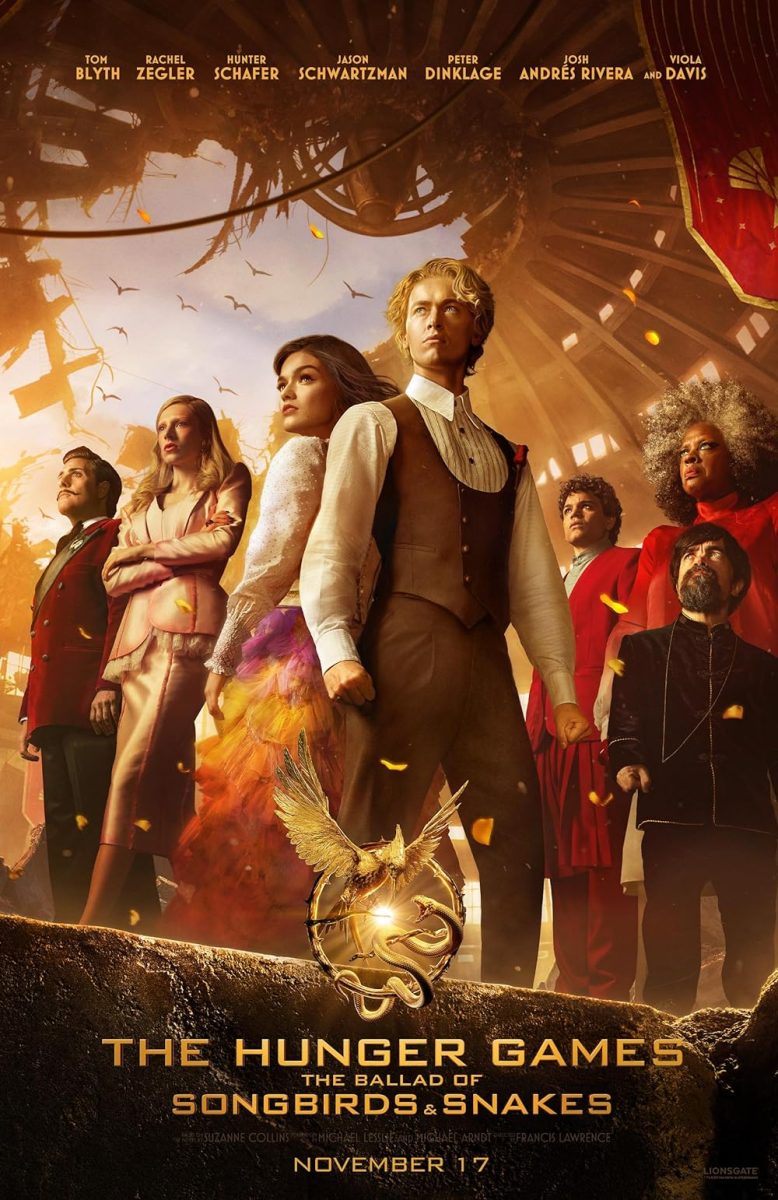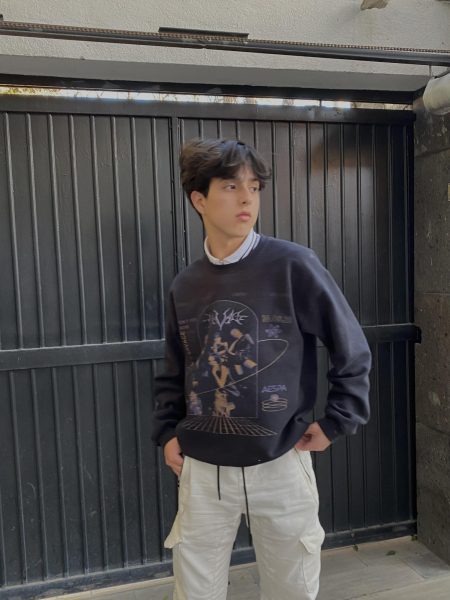Eight years after the first Hunger Games film debuted in theaters, the highly anticipated prequel “The Ballad of Songbirds and Snakes” has been released. True to the original novel’s intricate plot, compelling characters and world-building, the film adaptation stands as a nostalgic addition to the original magic of the “Hunger Games” series, although it loses some of its thematic punch.
“The Hunger Games: Ballad of Songbirds and Snakes” opened on Nov. 17 to a $99 million global opening weekend despite a low-performing opening night. The debut is strong considering promotional setbacks prior to the approval of Lionsgate’s interim agreement with the Screen Actors Guild-American Federation of Television and Radio Artists (SAG-AFTRA) in late October.
Though it falls behind all four preceding Hunger Games films which each debuted with over $100 million in ticket sales, the debut was a considerable success given its nature as a prequel with no returning actors.
Set 64 years before Katniss and Peeta head to the arena, the film follows a young Coriolanus Snow, played by Tom Blyth, as he spirals from emotions of love, dedication and a thirst for power. The future president is determined to resolve his family’s financial struggles by winning the Plinth prize: a fund including a full scholarship to The Capitol’s top university. To do so, he must serve as a mentor in the 10th annual Hunger Games and “make a spectacle” out of Lucy Gray Baird, played by Rachel Zegler, a singer reaped from District 12.
The film’s first trailer, released on April 27, promised an emotionally complex and dramatic prequel, although the visuals seemed oversaturated with warm colors compared to the more grounded visuals of the original franchise.
The saturation prevailed in the film, perhaps resemblant of Coriolanus Snow’s life in the affluent Capitol. However, the persistence of the saturation even as he is stationed deep within the impoverished District 12 was a notable visual shift from the dull grayness under which the districts were portrayed in the first movies.
Although loyal to the book’s original storyline, the film’s pacing felt somewhat rushed, making Snow’s deterioration into power-hungry madness seem haphazardly developed.
The film fails to impactfully capture Snow’s moral struggle crossing the line between good and evil in his personal relationships. Lost in the film is the gut-wrenching punch of Snow’s betrayal that ends the life of his friend Sejanus Plinth, played by Josh Andrés Rivera, from which the film moves on rather quickly.
The rise and fall of Snow’s relationship with Lucy Gray was similarly rushed. The chilling scene of double-sided mistrust and the eventual tragedy of the relationship felt too sudden.
Most different from the original series is the prequel’s lack of social critique. The film’s rushed nature brushed over many elements of Snow’s power-hungry character, losing impactful thematic moments and the critique of modern power structures.
Perhaps this is to be expected. The original series, having the time and resources of three novels, four films and a strong hero, had far more room to include an intricate portrayal of Panem’s districts and their hero, Katniss Everdeen, as she rose from the “Girl on Fire” to the “Mockingjay.”
But what the film lacks in pacing and social critique it makes up for through its world-building, still portraying a captivating, and entertaining background for the fan-beloved series. Fans especially loved the countless parallels to the original movies, including Lucy Gray’s mentioning Katniss and the reveal that the symbolic battle cry of the mockingjay relates to Lucy Gray and Snow’s relationship.
Incredible performances and a soundtrack that lives up to the expectations set by the preceding films make the film a ballad worth listening to.
Being a critical element of the original novel, the film’s soundtrack is an homage to the fictional Panem, capturing what should be the sounds of the Appalachian District 12. The music of the prequel contrasts the forceful yet slightly unrelated albums that accompanied the previous films.
Olivia Rodrigo’s “Can’t Catch Me Now” may be the most fitting and memorable of the Hunger Games themes. With a dramatic build-up and that signature acoustic sound of a true Hunger Games song, “Can’t Catch Me Now” inspires a sense of nostalgia, while the lyrics depict Snow and Gray’s relationship arguably better than the film itself.
No amount of wrong-doing from the villainous protagonist could prevent audiences from indulging in Snow’s eerily charismatic character. Mainly due to Tom Blyth’s exceptional performance, fans’ obsession with the image of young “Coryo” Snow dominated the social media landscape despite the character’s outright lack of morality.
While Rachel Zegler seemed a promising rising star at the moment of her casting, recent controversies have polluted her public image. Still, her casting as Lucy Gray is as fitting as it could be. With a stunning vocal performance perfectly suited for the bluegrass ballads of the lower districts and a charismatic performance well-suited for Panem’s lost golden girl, Lucy Gray may have been just what Zegler needed to regain her popularity.
Captivating visuals and enthralling sounds succeed in pulling fans of the original series back into Suzanne Collins’ awe-inspiring dystopian world. Although missing notable elements of plot and characterization, true fans may still reminisce to fill these missing elements and leave the theater with a heavy taste of wonder and nostalgia.









